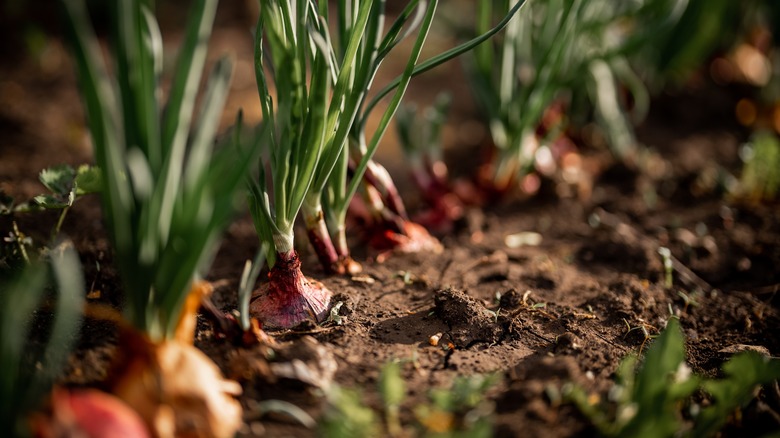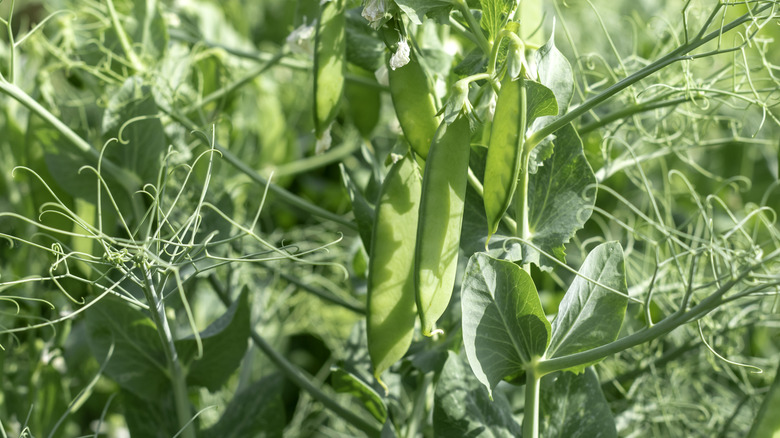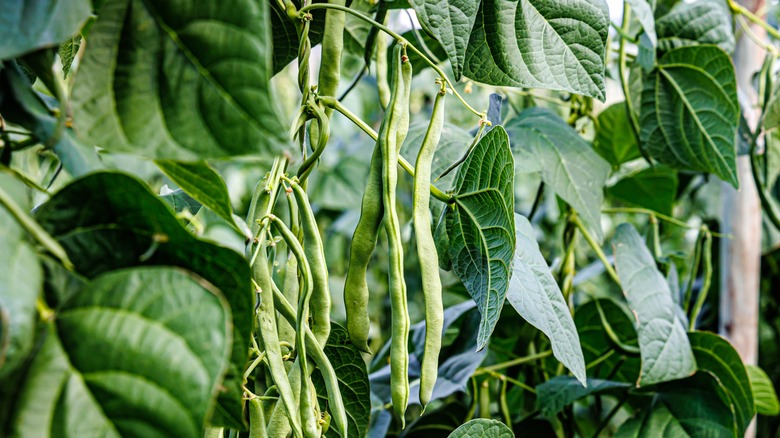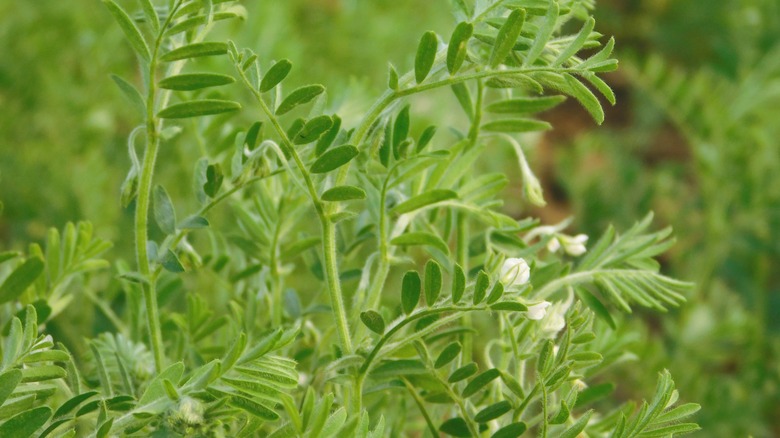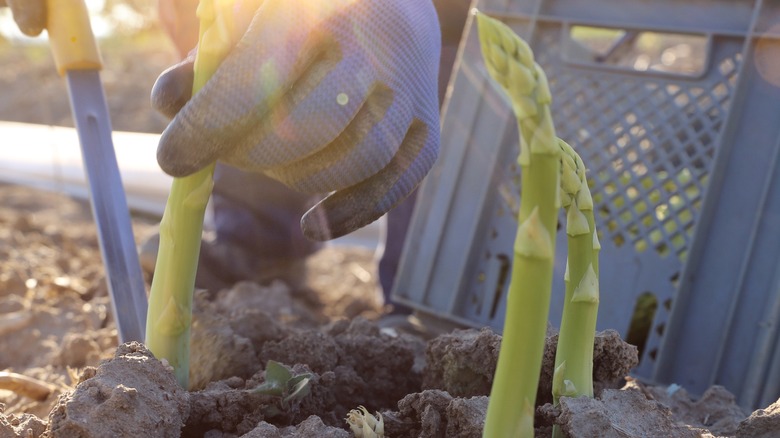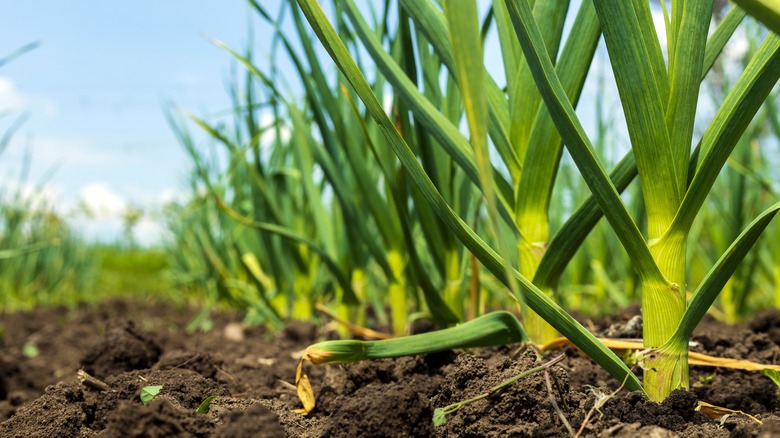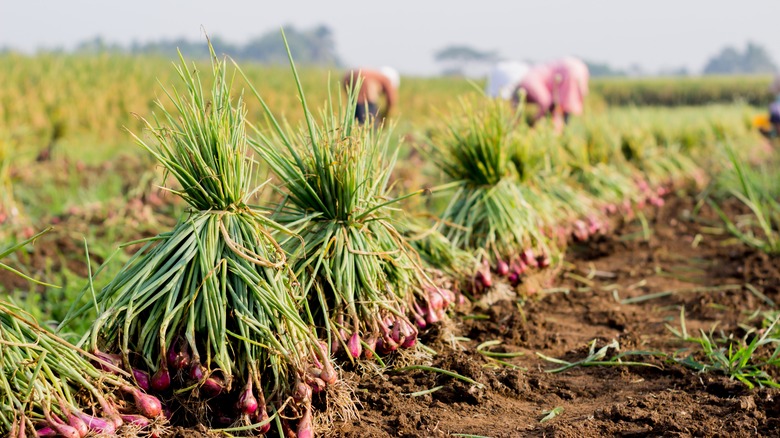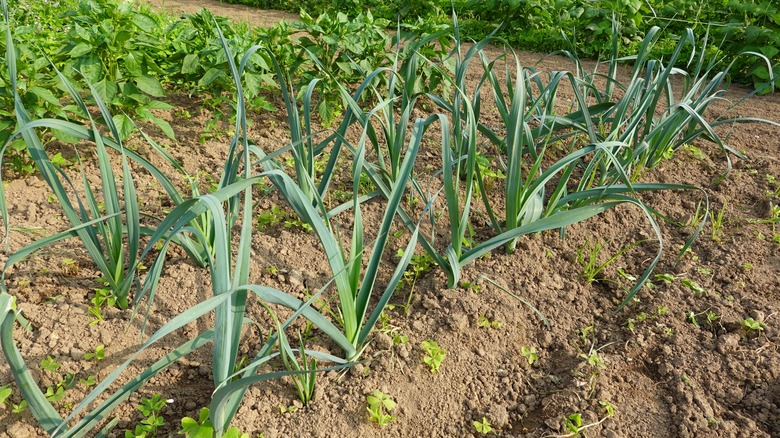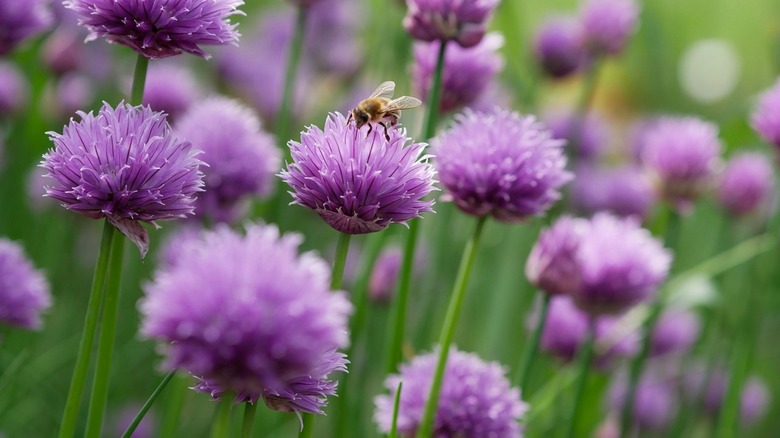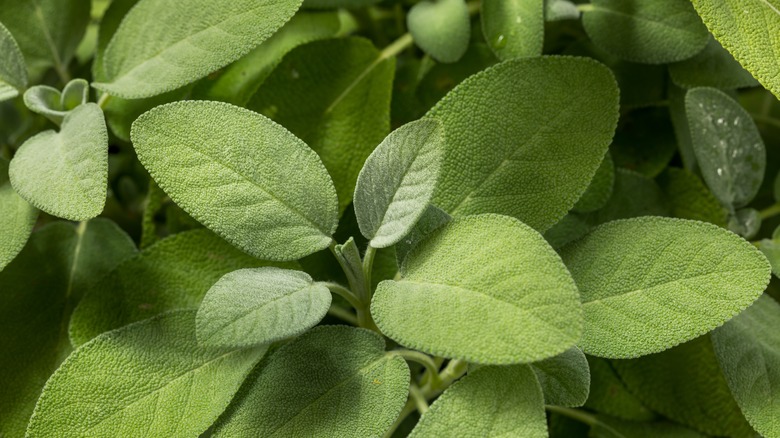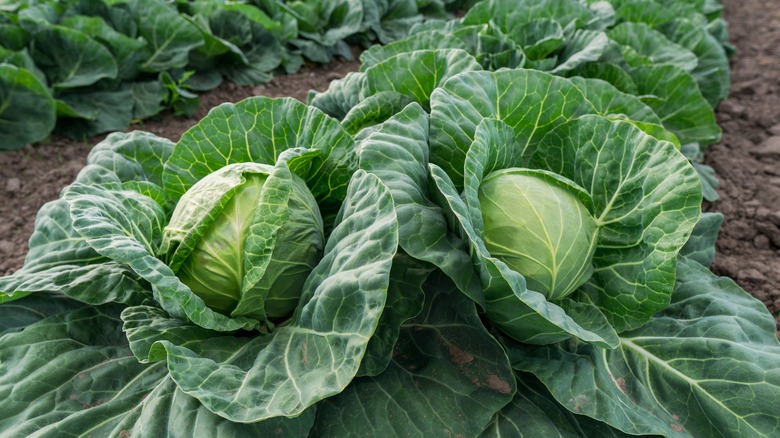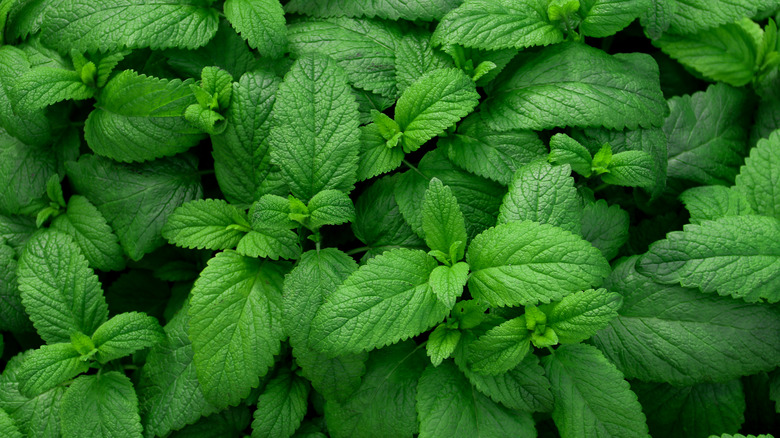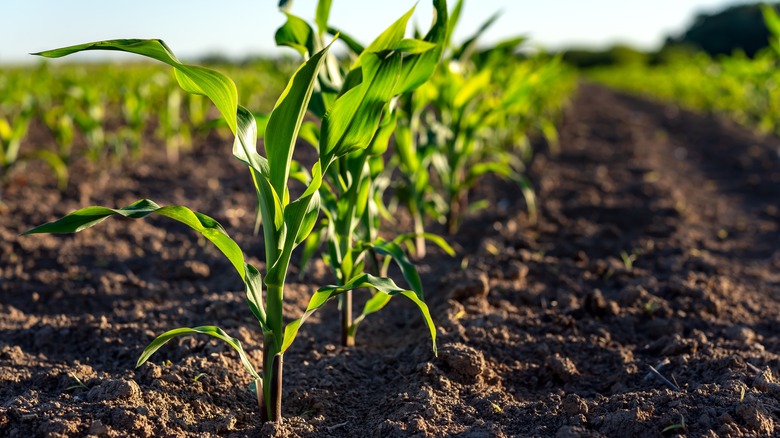Growing These 12 Popular Plants & Veggies With Onions Isn't The Best Idea
You rarely want to linger near someone who's been eating or chopping a bunch of onions, and it seems that certain plants aren't too fond of being near onions (or other alliums) either — just for different reasons. Onions can chemically inhibit the growth of beans and other plants, attract pests, spread diseases among other common vegetables, and dramatically worsen disease in other alliums. All of this is unfortunate since onions also possess properties that usually make them great companion plants.
But companion planting has a science problem. The claim that some garden plants will benefit other specific plants when grown nearby is often true, as is the corollary that some plants are bad for each other. But companion planting is also rife with pseudoscience and conventional wisdom that doesn't always withstand examination. Scientists and scientifically minded horticulturalists have a habit of using terms like "intercropping" rather than "companion planting," and their perspective often incorporates data beyond generalized information about which plants don't get along. But science doesn't always have the correct answers, if only because no one has looked closely enough yet. So, in cases you're unsure, try some science of your own. Test some plant combinations, then the inverse, and see what works best for you and your garden.
1. Peas
Along with a few other types of vegetables, peas generally shouldn't be planted near onions based on some well-understood issues. Notably, alliums have a negative allelopathic relationship with some plants — that is, a chemical produced by onions is detrimental to peas. (Allelopathy can also have a positive, usually stimulatory effect on plants, one source of notions about companion plantings.)
Phenolic acid, flavinoids, and other allelopathic chemicals can act to inhibit peas' growth (and that of other plants), making them particularly unsuitable for planting together. They also compete for soil nutrients, a common problem with onions.
2. Beans
Perhaps the best-known allelopathic relationship between onions and other plants occurs with beans. As with peas, conventional wisdom claims that chemicals produced by onions inhibit the growth of beans and other legumes. Legumes require fairly high levels of nitrogen, as do onions, and beans can usually supply their own by fixing nitrogen in the soil. But the allelopathic chemicals released by onion roots inhibit nitrogen production, causing the beans to compete for available fertilizer-based nitrogen — a battle often won by the alliums. Some experts claim this problem can be resolved by interplanting with sufficient spacing between the beans and onions.
3. Lentils
Organosulfur compounds produced by onions can inhibit the growth of lentils, another legume. Ferulic acid, gallic acid, and vanillic acids are all present in onions, and all have been found to substantially impact the germination and growth of lentils. You might also want to avoid planting lentils where onions have been recently planted, unless the sulfur has been eliminated from the soil by planting (and then removing) a crop that uptakes sulfur, like corn or alfalfa. Rainfall or irrigation will eventually leach away sulfur in most soil types.
4. Asparagus
Asparagus used to be classified as an allium like onions and garlic, but it's now in its own family (Asparagaceae) and in an order (Asparagales) shared with orchids and asters. Since alliums aren't generally planted together, you might conclude that this change of classification frees you to plant asparagus with onions. But allelopathic chemicals from onions and competition for resources can stunt the growth of asparagus. Additionally, these plants have some pests in common that are worsened by proximity. So, suffice it to say, onions and asparagus don't belong alongside each other in the garden.
5. Garlic
Garlic is an allium like onions, so it's a foregone conclusion that they shouldn't be planted together — but why? There are actually a few reasons. Garlic and onions are both susceptible to diseases like Botrytis, pink root, powdery mildew, purple blotch, and, in particular, Fusarium basal rot. Planting them together increases the risk of disease transmission. They also compete for nutrients in the topsoil, leading to underdeveloped garlic. Additionally, when interplanted, they compete for sunlight, and while you can resolve this with as little as six inches of spacing, this doesn't address the disease issue.
6. Shallots
As we have addressed, growing alliums near each other isn't a good idea, and shallots are yet another allium to keep in mind. Shallots are a culinary delight with a more delicate flavor than onions — a flavor that, it turns out, is also appreciated by thrips and onion maggots, both very common pests for alliums.
There are different methods out there for controlling thrips and onion maggots, but crop rotation is key once you identify an infection. Shallots and onions also share some common diseases, including downy mildew, Botrytis, white rot, purple blotch, and others.
7. Leeks
It likely won't surprise anyone that leeks are yet another allium, as the similarities to both onions and lilies are obvious. It's also unsurprising that leeks can spread (and contract) common allium diseases when interplanted with onions. These diseases include white rot, purple blotch, downy mildew, rust, and Botrytis. They also suffer from the same pests: onion maggots, onion thrips, and western flower thrips. While thrips can be introduced via a number of host plants, onion maggots are generally carried by alliums, and it's even a good idea to remove wild onion and chive plants from the proximity of leeks.
8. Chives
Of course, chives aren't just a problem for leeks. You might think of chives as an herb, but they're also an allium like onions. So, chives shares all of onions' common diseases and pests, particularly Fusarium, downy mildew, pink root, and — you guessed it — onion maggots and thrips. Because chives are a perennial herb, infections and infestations can be particularly difficult to deal with, so it's best to avoid planting chives where onions have been within the past three to four years. Garden lore suggests that chives might repel thrips, but actually, the opposite is true (though chives will repel aphids and Japanese beetles).
9. Sage
Chives aren't the only herb to have an issue with onions. Sage isn't compatible with onions on at least one count, and possibly several others. The most obvious problem is that they prefer incompatible soil conditions — moist soil for onions and dry soil for sage. Plus, depending on who you ask, either onions inhibit the growth of sage or vice-versa. It is, of course, possible that both are true, which would be twice the reason to avoid this particular companion planting. Similarly, some sources say sage and onions can negatively affect each other's flavor.
10. Cabbages
Not all cases of ill-advised interplanting are as clear as those above. For example, some research has shown that applying onion extract to tomato plants produces an allelopathic inhibiting effect, but since no one grows tomatoes in onion extract, tomatoes and onions are still widely considered great companion plants. Similarly, some growers claim that sharing a pest with onions (the western flower thrip) makes cabbages poor companion plants for onions. Research from Iowa State University, however, found that companion plots of onion and cabbage showed "high resistance" to cabbage loopers and very good resistance to the cabbage worm.
11. Mint
Sometimes, conflicting or competing information can muddy the water where onion companion plantings are concerned. Sharing a pest like the western flower thrip with onions, as both cabbages and mint do, certainly isn't ideal. But thrips are ubiquitous (even in greenhouses), so how detrimental mint is to onions (or vice-versa) is certainly debatable. Others claim these plants are great together because mint can help deter the onion fly. So, we say that because there are so many variables at play, you can try companion-planting cabbages and mint with onion for yourself.
12. Corn
While some experts recommend interplanting corn and onions, there are reasons to be circumspect about the pairing. Burkholderia cepacia, which causes sour skin in onions, is harbored by the roots of corn plants, and samples collected from corn have shown more genetic adaptability. Also, according to a 2021 study published in the journal Phytopathology, two novel pathovars of Pantoea stewartii subsp. Indologenes have been discovered that are pathogenic for onions, behaving much like center rot, which other Pantoea species are known to cause in onions. These new pathovars are not harmful to corn, but they're sometimes carried on corn seed.

